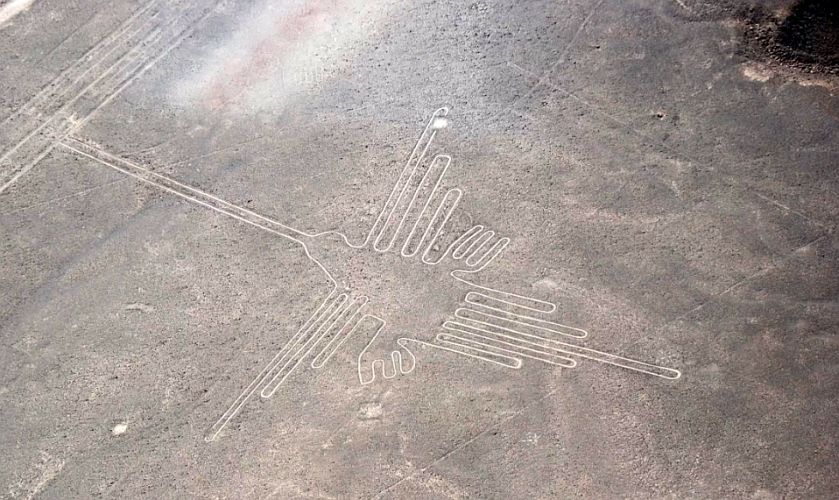Anthropology
Related: About this forumMysterious Etchings in Peruvian Desert Prove to Be Foreign Birds.
The sprawling Nazca Lines have long been cloaked in mystery. The enormous geoglyphs number in the thousands and portray everything from animals and plants to seemingly mythical beasts and geometric patterns. Now, researchers have found some of Peru's massive creations depict non-native birds. Among the 16 massive bird carvings in the Nazca desert of southern Peru are a hermit (a forest species) and a pelican (a coastal denizen), according to new research published yesterday (June 19) in the “Journal of Archaeological Science: Reports”.
The Nazca Lines are enormous geoglyphs, created with piled stones or carved into the dry desert ground. Most are geometrical shapes or drawings of animals made with one continuous line; they're best viewed from the air or from surrounding hillsides. The Nazca people began crafting these lines — both by carving into the desert and using piles of stones — around 200 B.C. Archaeologists suspect they had a religious purpose ...
One famous glyph, previously identified generally as a hummingbird, actually appears to be a hermit, a subgroup of hummingbirds found in the tropics and subtropics, the researchers reported. Hermits live in the forests of northern and eastern Peru, but not in the southern desert.
Another surprise was the discovery that another of the glyphs represents a pelican, which would have been found only on the coast.
Scientists analyzed the bird-shaped Nazca Lines, finding that this geoglyph that was thought to show a hummingbird is really a bird called a hermit. (Credit: Masaki Eda)

The Nazca Lines in Peru take the form of various animals, plants and geometric shapes. Here, the so-called Owl Man or Spaceman. (Credit: Ron Ramtang/Shutterstock)

https://www.livescience.com/65755-mysterious-nazca-lines-birds-identified.html
get the red out
(13,910 posts)May well have had trade routes that exposed them to these foreign species.
I love the Anthropology posts! They show that ancient humans were very smart, they just hadn’t the knowledge base we have now (which builds from everyone who came before present day.
bluecollar2
(3,622 posts)In San Juan de Marcona, not far from Nazca.
I was very fortunate to see the lines and other archeological sites along the Southern Peruvian coast line.
I have no doubt that there are many more mysteries that have yet to be discovered in that arid desert.